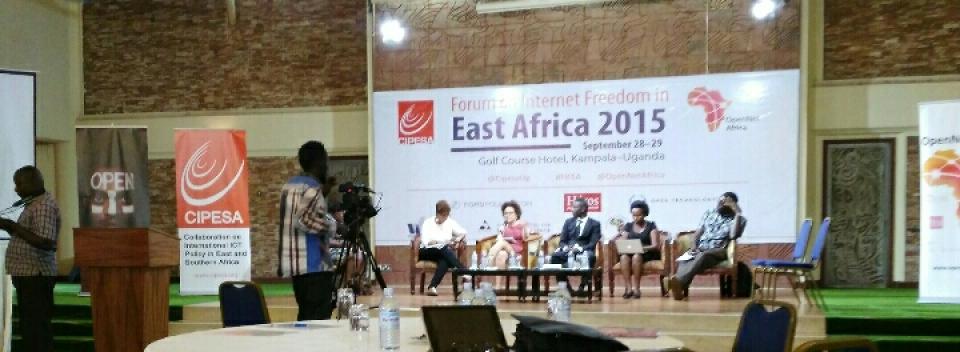
On the 28 and 29 September 2015, CIPESA held its eighth Forum on Internet Freedom in East Africa. One of the panel discussions, ‘Violence Against Women Online’ got me thinking on how ‘violence against women online’ can be handled to promote a more gender inclusive and perhaps a more gender sensitive internet – one where women can freely share and participate in the virtual space. Most discussions such as this tend to focus on how women can ‘behave’ in a more ‘tolerable manner’ online such as uploading modest pictures.
The discussion kicked off in high gear by defining online violence as any form of abuse or threat that affects internet users online. The effects can range from fear to use the internet or fear to use the internet and various online platforms freely. Having such a broad definition expands the law as conventionally known on the physical space to cover the internet. However, one of the things we often forget about is the impact of the internet on women who are not users, this applies similarly to anyone who does not use the internet but is affected by it. What happens to such people? What mechanisms have we put in place for them? The question is what do we do about the non users? They too have rights. I recall the scenario of a girl, who even though she clearly hadn’t invited online abuse she suffered humiliation by having her revealing pictures shared multiple times online.
Bringing the conversation about gender into internet matters is a good approach to internet freedom. It promotes the idea that gender discussions must not stop and all societies must continue to carry on with the discussion. I am still finding the ways to express my convictions about gender and this space definitely creates an opportunity for me to explore the topic. While at the forum, I came to the realisation that feminism, womanism, and gender equality all carry within them the spirit of one message. It is important that as promoters of female inclusion in social discourse we avoid polarisation.
However, the main approach of looking at women as the most in position to promote a more gender inclusive and sensitive internet can be very wanting. I leave the question, ‘how about the other half of gender that uses the online space? This idea did not wholly slide from the discussion as the panel itself included men. And we must continue to involve men in gender discussions because once the male voice is given a significant position then the movement to promote women’s rights online will gain a tremendous momentum and with it landslide achievements. When you think about it, it makes a lot of sense that while one gender suffers violence online, the perpetrators of this violence are mostly the opposite gender.
This take on internet violence is two-fold; first, it expands on the definition that violence is not merely physical violence and abuse, that violence does not only stretch to verbal abuse but also, in the internet sphere, it covers any online behavior that threatens the rights of another on the internet. The impacts of online violence must not be ignored either, statistics, as mentioned during the discussions, show that women are less active on social media compared to men, and this is also reflected in the fact that some fear posting their thoughts and ideas on the internet while those who seem to actively engage on online discourse are self censors for fear of attracting the ‘wrong’ comments, response or attitude.
The second aspect is the inclusion of Violence against Women Online as part of domestic violence. Isn’t that overshadowing online violence in and as of itself? But it widens the scope of domestic violence. The reality is that even a significant amount of online violence can be attributed to family or relatives; online violence is not always domestic violence. However, it has been seen as one of the ways in which domestic violence is being perpetrated. Domestic violence is traditionally applicable to only that violence which happens in the context of a family and such other relational categories. This categorisation brings to light the fact that Violence against Women Online is definitely an issue that must be addressed as part of Gender Based Violence, a more inclusive categorisation.
All in all discussions such as this must not only be inclusive as far as they invite men to support the cause but also in engaging the male gender to act honorably and respectfully online.
- 4272 views





Add new comment